Energy
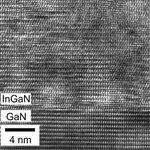
Crystals form the basis for the penetrating icy blue glare of car headlights - they could also be fundamental to the future in solar energy technology?
Manufactured alloy crystals, such as indium gallium nitride or InGaN, form the light emitting region of LEDs, for illumination in the visible range, and of laser diodes (LDs) in the blue-UV range.
In an article recently published in the journal Applied Physics Letters, researchers revealed the fundamental aspect of a new approach to growing InGaN crystals for diodes, which promises to move photovoltaic solar cell technology toward…
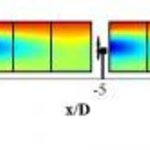
Wind turbines often disappoint because the models that justified them weren't all that accurate.
But as wind turbines themselves hopefully improve, modeling may as well. And output power may get some extra energy from an unexpected direction: below.
According to the authors of a new paper, many wind turbine array studies overlook the fact that important airflow changes occur inside the array.
"We discovered that a typical measure of the significance of flow changes was rather deficient," says Jensen Newman, co-author of the paper and a graduate student at Rensselaer Polytechnic…

Jeremy Leggett, who runs the largest solar power installer in the UK, is celebrating the World Energy Congress in South Korea by selling you a book predicting the demise of his competitors in conventional energy companies.
Well, he is going to be right eventually. Though we supposedly hit Peak Oil in 1992, yet still haven't, the math says they can't be wrong forever. To make his case that fossil fuels are doomed sooner rather than later, he invokes the popular standby of people who want to sound science-y: the brain.
"Brain scientists tell us we have a very worrying collective tendency…
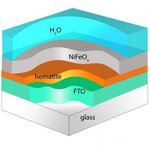
Chemists recently achieved a breakthrough in efforts to develop an economical means of harnessing artificial photosynthesis by narrowing the voltage gap between the two crucial processes of oxidation and reduction, according to a new paper.
The team reports it has come within two-tenths of the photovoltage required to mimic oxidation and reduction respectively using unique photoanodes and photocathodes the team developed using novel nanowire components and coatings. Narrowing the gap using economical chemical components, the group moves researchers closer to using the man-made reaction for…

While America has drastically reduced its greenhouse gas emissions - CO2 from energy is back at early 1990s levels and emissions from coal are back at early 1980s levels - that isn't good enough for many environmentalists. Meanwhile, China is setting the stage to offset all of the greenhouse emissions cuts by the rest of the world while claiming they lead in clean energy.
But protests are a luxury of democracies. The environmentalists who cheered when the Chinese dictatorship banned cars during the Beijing Olympics won't find much to be happy about when the same regime brings on its synthetic…
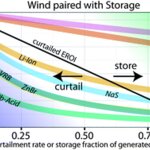
While solar energy is clearly the future, it isn't ready yet. Two large obstacles are cost versus efficiency and storage.
Wind power is advocated by a much smaller group, because its obstacles are far greater. A new paper adds evidence to that, noting that when the operation and construction of storage batteries are included, solar power numbers can work but wind cannot.
Most electricity in the United States is generated at power plants that run on coal and natural gas – fossil fuels that contribute to global warming by emitting large amounts of carbon dioxide. Solar and wind power are…

A new technique for improving the connections between stacked solar cells could one day improve the overall efficiency of solar energy devices and reduce the cost of solar energy production.
Stacked solar cells consist of several solar cells that are stacked on top of one another. Stacked cells are currently the most efficient cells on the market, converting up to 45 percent of the solar energy they absorb into electricity.
But to be effective, solar cell designers need to ensure the connecting junctions between these stacked cells do not absorb any of the solar energy and do not siphon off…

The search for clean, green sustainable energy sources marches on. While some studies note that solar and wind energy could be viable by 2025, if they could bypass environmental lawsuits, hydrogen and nuclear are rushing to fill the gaps.
Plants are not wrong, artificial photosynthesis, such as bionic leaves that produce energy-dense fuels from nothing more than sunlight, water and atmosphere-warming carbon dioxide, represent an ideal alternative to fossil fuels. Earth receives more energy in one hour's worth of sunlight than all of humanity uses in an entire year. Through the process of…

A new study conducted by the National Renewable Energy Laboratory (NREL) found that it might be possible for solar and wind generation to be cost-competitive with conventional energy, without federal subsidies, by 2025 - if new renewable energy development is allowed in the most productive locations.
And that will be the issue. Environmental groups are resistant to any projects on government land - in southern California, just the power lines for a solar project crossing government land resulted in a lawsuit that exceeded $100 million. And that is without other stakeholders having input…
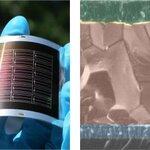
Thanks to athletes like Ryan Braun and Lance Armstrong, doping has gotten a bad rap, but if solar power is ever going to be viable, doping will be essential.
Flexible thin film solar cells require fewer materials and can be manufactured in large quantities by roll-to-roll processing. One such technology relies on cadmium telluride (CdTe), which is a distant second to silicon-based solar cells but cheap in terms of production costs. Because they are grown on rigid glass plates, these superstrate cells have, however a big drawback: they require a transparent supporting material that lets…